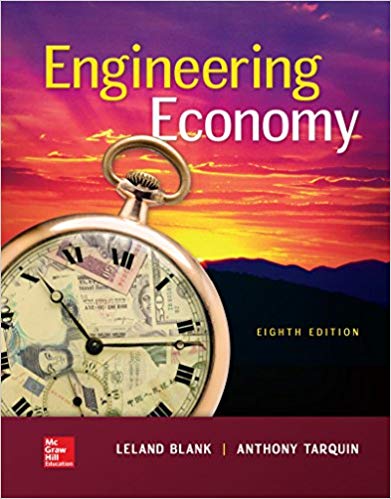EP Electric has identified two new methods to treat its cooling water. Alternative I (for inflow) would
Question:
EP Electric has identified two new methods to treat its cooling water. Alternative I (for inflow) would treat the raw water with a conventional reverse osmosis system so that the cycles of concentration could be increased from 5 to 20. This will result in water cost savings of $360,000 per year and chemical cost savings of $56,000 per year. The initial cost of the equipment will be $2.3 million with an operating cost of $125,000 per year.
Alternative B (for blowdown) will treat the cooling tower blowdown water using a highpressure seawater reverse osmosis system to recover most of the water that is sent to an evaporation pond. This option will result in water savings of $270,000 per year. The cost of the system will be $1.2 million with an operating cost of $105,000 per year. Assuming one of the two methods must be installed, determine which is preferred on the basis of the incremental ROR value using MARR of 5% per year, which is a typically low return expected of government projects. Use a 10-year study period with no salvage value for either system.
Salvage ValueSalvage value is the estimated book value of an asset after depreciation is complete, based on what a company expects to receive in exchange for the asset at the end of its useful life. As such, an asset’s estimated salvage value is an important... MARR
Minimum Acceptable Rate of Return (MARR), or hurdle rate is the minimum rate of return on a project a manager or company is willing to accept before starting a project, given its risk and the opportunity cost of forgoing other...
Step by Step Answer:






